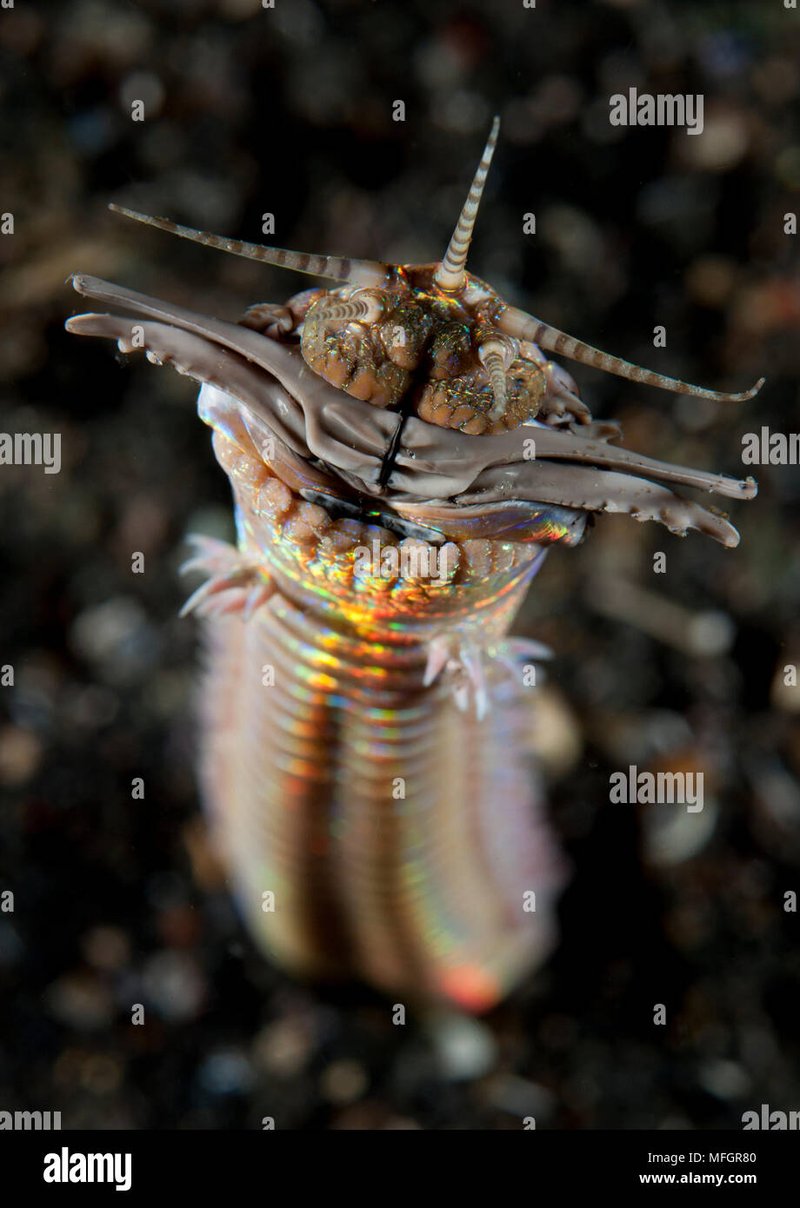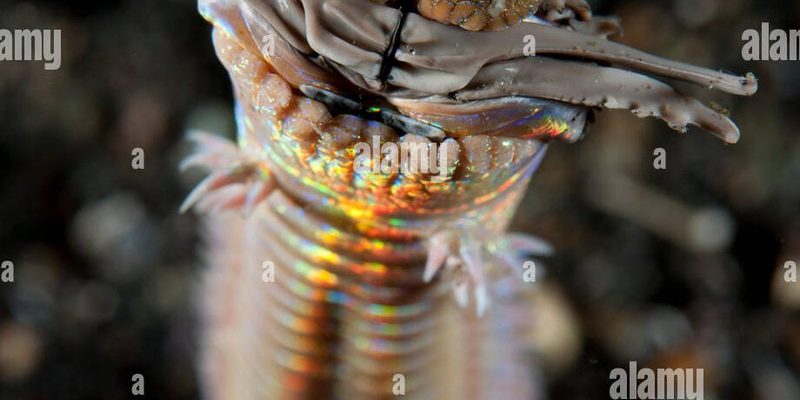
Imagine the Bobbit worm as nature’s version of a ninja, lying in wait beneath the sand, ready to strike at a moment’s notice. This creature can reach lengths of up to 10 feet, but its true marvel lies in its **bite force** and how its jaws are constructed. In the ocean’s depths, everything has its purpose, and those that can adapt survive. So, let’s take a closer look at what makes the Bobbit worm such a fascinating topic of study.
Understanding the Bobbit Worm
The Bobbit worm, or *Eunice aphroditois*, is not your average worm. Found in both tropical and subtropical waters, this marine creature can grow to impressive lengths—sometimes over 3 meters! Its vibrant colors can range from greens to blues, often making it blend into the coral environment. But looks can be deceiving; beneath its beautiful exterior lies a predator with a highly specialized anatomy.
The Bobbit worm hides mostly in burrows, only exposing its segmented body and head, which can resemble large antennae. When prey, like fish or crustaceans, swims too close, the worm quickly strikes with its powerful jaws. The speed and force of this attack are fascinating, earning it a reputation for being one of the ocean’s top ambush predators.
You might be wondering what exactly makes this worm capable of such rapid strikes. Let’s dig deeper into its bite force and jaw structure.
The Bite Force of the Bobbit Worm
Now, when we talk about bite force, it’s essential to understand what that means in the context of the Bobbit worm. Simply put, bite force measures how much pressure a creature can exert with its jaws. For the Bobbit worm, this measurement is not just impressive—it’s critical for hunting.
Research suggests that the Bobbit worm can exert a bite force of over 2,000 Newtons. To put that into perspective, that’s similar to the bite force of a large shark! This immense force allows the worm to grasp and hold onto slippery prey that might otherwise escape. That’s why a Bobbit worm’s bite is something to be taken seriously.
You might think, “How can a creature so seemingly unassuming have such a powerful bite?” Well, the answer lies not just in its size, but in its **jaw composition**.
Jaw Composition: The Anatomy of a Predator
The jaws of the Bobbit worm are quite the engineering marvel. They consist of a pair of sharp, chitinous structures, which are incredibly hard and strong. Chitin is the same material that makes up the shells of crustaceans. It’s no wonder that these jaws can deliver such a punch!
When observing its jaws under a microscope, researchers have noted that they are serrated, much like a steak knife. They’re designed for slicing through tough scales and exoskeletons of prey. This anatomical design is not only efficient but also reduces the effort needed to capture and consume food.
Another fascinating aspect of these jaws is their **flexibility**. The Bobbit worm can adjust its jaw position to suit the type of prey it’s targeting. This versatility enhances its hunting skills, allowing it to adapt to different environments and prey types.
Why Bite Force Matters in the Ocean
Understanding the bite force and jaw composition of the Bobbit worm isn’t just about being amazed at nature. It actually provides insight into the ecological role this creature plays in its environment. As a predator, the Bobbit worm helps maintain the balance in oceanic ecosystems.
By preying on smaller fish and invertebrates, it ensures that no single species dominates the habitat. In essence, it acts as a natural regulator, contributing to the biodiversity of the marine ecosystem.
Moreover, studies of forces like that of the Bobbit worm’s bite can offer clues about evolutionary adaptations across species. What works for a Bobbit worm might be applicable to understanding other predatory animals’ adaptations. This kind of research can even help in conservation efforts by highlighting the importance of maintaining diverse marine life.
Research Methods: How Scientists Study the Bobbit Worm
To study the Bobbit worm’s bite force and jaw structure, scientists employ various methods. One common technique involves using high-speed cameras to capture the worm’s strike in action. By analyzing these recordings, researchers can measure the speed and force behind each bite.
Additionally, **biomechanical modeling** is used to simulate how the worm’s jaws work when capturing prey. This involves creating digital models based on the worm’s anatomy, allowing scientists to predict how it would perform under different scenarios.
Field studies are also crucial. Scientists observe the worms in their natural habitat, noting their behavior and hunting strategies. These observations can provide a wealth of information that lab simulations alone cannot replicate.
What’s exciting is how this data contributes to a broader understanding of marine biology. It opens doors to explore other species’ evolutionary traits and behaviors, linking them back to the Bobbit worm.
Conservation and the Future of Bobbit Worms
As we uncover more about the Bobbit worm, it’s essential to consider its conservation. While these creatures may seem abundant in their natural habitats, their existence is threatened by overfishing and habitat destruction.
Understanding their role in the ecosystem can help raise awareness about the importance of protecting marine habitats. Conservation efforts that focus on preserving biodiversity can directly benefit species like the Bobbit worm.
Moreover, fostering interest in these unique creatures encourages more people to engage in marine conservation. The more we understand and appreciate the fantastic adaptations of the Bobbit worm, the more likely we are to support efforts to protect it.
The study of the Bobbit worm’s bite force and jaw composition pulls back the curtain on one of nature’s most intriguing predators. From its remarkable speed to its efficient bite, this worm proves that there’s so much more to discover beneath the ocean’s surface.
As we continue to explore and study creatures like the Bobbit worm, we not only learn more about them but also about the ecosystems they inhabit. Their role in keeping the balance of marine life is crucial, and it’s a reminder of how interconnected all life truly is.
So, whether you’re a marine enthusiast or just curious about the wonders of the ocean, the Bobbit worm continues to captivate and inspire. Let’s keep the conversation going about protecting our oceans and the incredible creatures that call it home!

